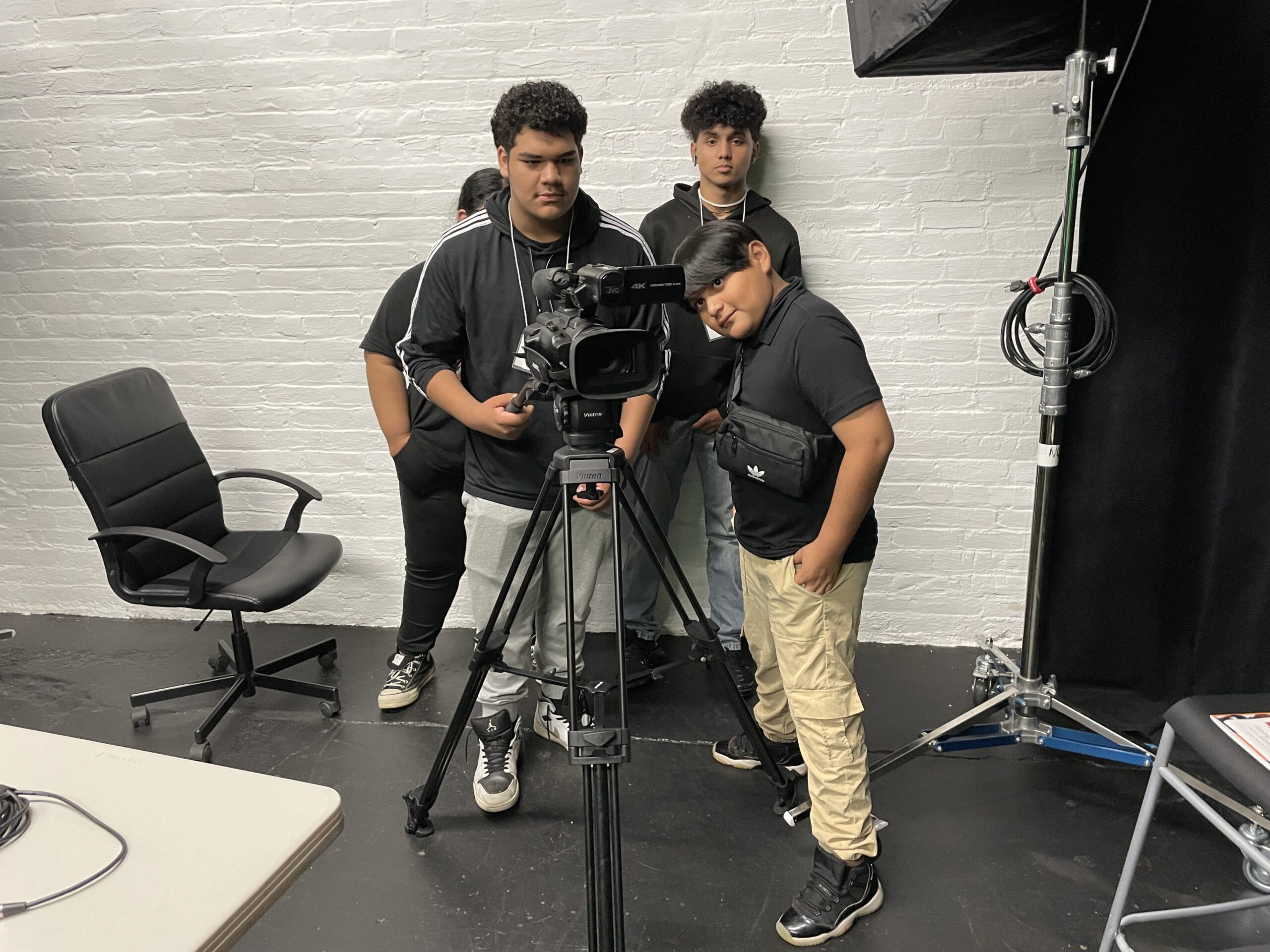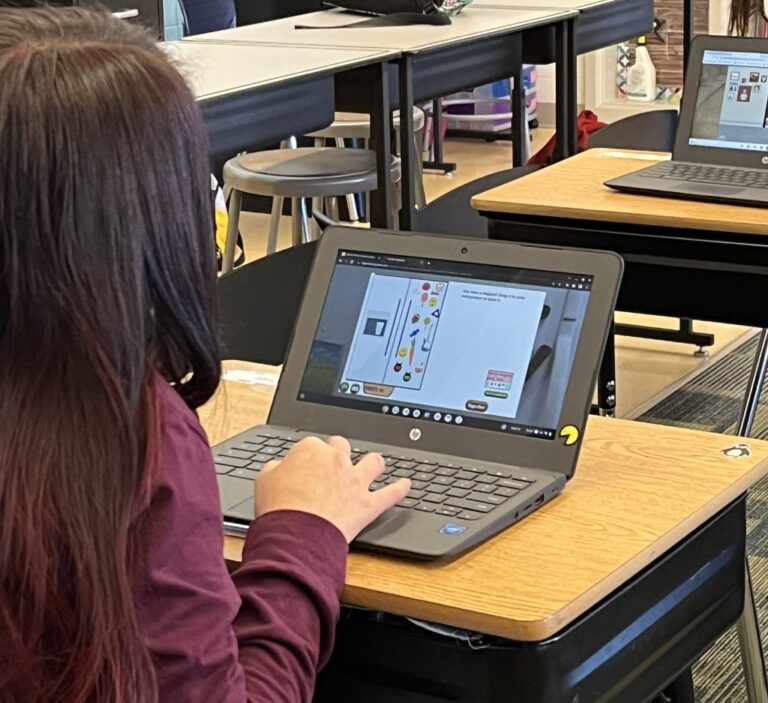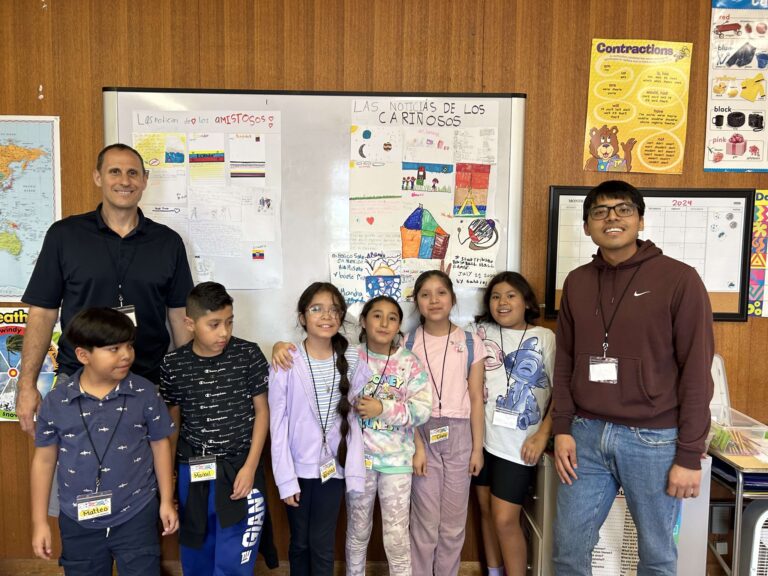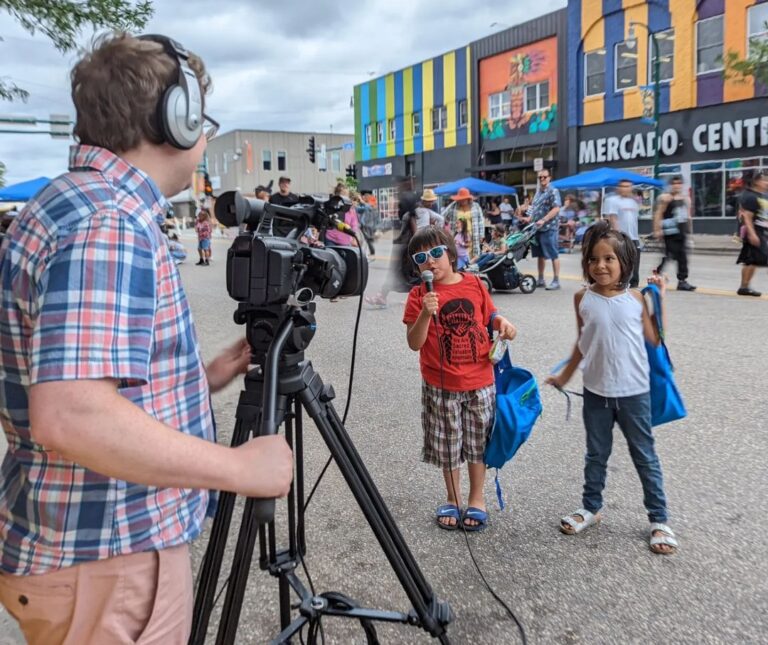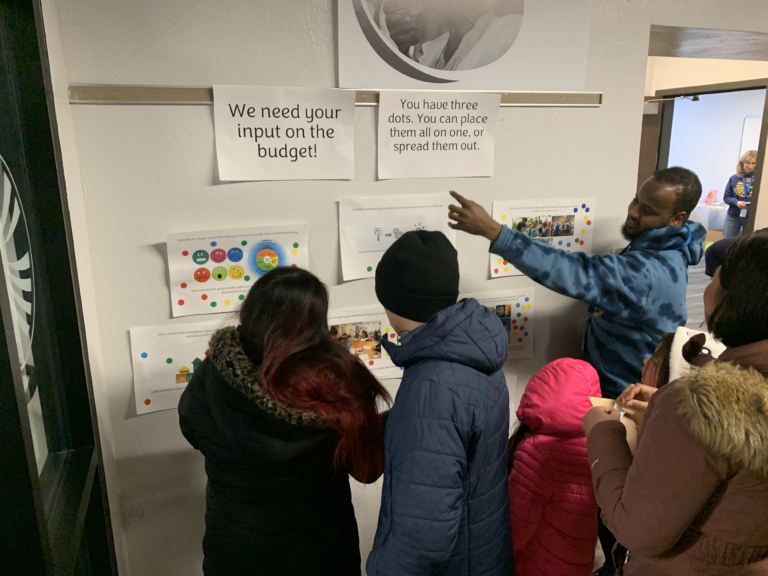Growth Starts When You Leave Your Comfort Zone
One of my all-time favorite movies is “Defending Your Life.” Written, directed by, and starring Albert Brooks, the 1991 film takes a comedic look at the afterlife.
Brooks plays Daniel Miller, a Los Angeles advertising executive, who dies in a car accident on his 39th birthday after he gets hit by a bus. He is sent to Judgement City, a place where everyone’s life is put on trial to determine whether they advance to the next phase of existence or whether they are reincarnated again on Earth.
Rip Torn plays Daniel’s defense attorney, Bob Diamond. In their first meeting, Bob explains that people from Earth use very little of their brains. The reason is most of their lives are driven by fear. If the court determines Daniel has conquered his fears, he moves forward in his existence, where he can use more of his brain and experience more of what the universe has to offer. If he doesn’t advance, his soul goes back to Earth, where he will live another life and attempt to move past his fears.
This scene is a classic.
Bob Diamond: When you are born into this universe, you are in it for a very long time. You have many different lifetimes. After each lifetime, there is an examining period, which you are in now. Every second of every lifetime is always recorded. As each one ends, we sort of look at it. Look at a few of the days, examine it and then if everyone agrees, you move forward.
Daniel Miller: What do you mean move forward?
Bob Diamond: I mean move forward, continue onward. The point of this whole thing is to keep getting smarter, to keep growing, to use as much of your brain as possible. For example, I use 48 percent of my brain. Do you know how much you use?
Daniel Miller: [Thinking, smiling] Forty-seven?
Bob Diamond: [Laughing] Three.
Daniel Miller: [Puzzled] I’m sorry?
Bob Diamond: [Smiling] Three.
Daniel Miller: I use three percent of my brain?
Bob Diamond: Yes, don’t worry about it. Everybody on Earth uses three percent of their brain, three to five percent. That’s why they’re there.
Daniel Miller: [Incredulously, holding up three fingers]. Three percent? Three percent? You mean nobody on Earth uses more than that?
Bob Diamond: When you use more than five percent of your brain, you don’t want to be on Earth, believe me. Well, not that some of your takeout places aren’t lovely, but there are many more exciting destinations for smarter people. Now, being from Earth as you are and using as little of your brain as you do, your life has been pretty much devoted to dealing with fear.
Daniel Miller: It has.
Bob Diamond: Well, everybody on Earth deals with fear. That’s what Little Brains do.
Daniel Miller: What are Little Brains?
Bob Diamond: That’s what we call you folks behind your back. [Laughing] Forgive me.
Daniel Miller: Who are you?
Bob Diamond: I’m just like you. I was on Earth a long time ago. But I advanced. I moved forward. I got over my fears, and I got smarter. Did you have friends whose stomachs hurt?
Daniel Miller: Every one of them.
Bob Diamond: It’s fear. Fear is like a giant fog. It sits on your brain and blocks everything. Real feelings. True happiness. Real joy. They can’t get through that fog. But you lift it, and buddy, you’re in for the ride of your life.
Good news. We actually use more than 3-5 percent of brains. The Hollywood version of this fact is an exaggeration. It’s also a myth that people only use 10 percent of their brains. That myth, which likely got started over 100 years ago, has been debunked.
Scientific American explains:
“Though an alluring idea, the ’10 percent myth’ is so wrong it is almost laughable, says neurologist Barry Gordon at The Johns Hopkins University School of Medicine in Baltimore. Although there’s no definitive culprit to pin the blame on for starting this legend, the notion has been linked to the American psychologist and author William James, who argued in ‘The Energies of Men‘ that ‘We are making use of only a small part of our possible mental and physical resources.’ It’s also been associated with Albert Einstein, who supposedly used it to explain his cosmic towering intellect. The myth’s durability, Gordon says, stems from people’s conceptions about their own brains: they see their own shortcomings as evidence of the existence of untapped gray matter. This is a false assumption. What is correct, however, is that at certain moments in anyone’s life, such as when we are simply at rest and thinking, we may be using only 10 percent of our brains.”
More good news. We can strengthen our brain’s gray matter with the right practice. Gray matter is the neural tissue that helps us learn and grow and leads us to realize our potential. This is what manifestation, or visualization, is all about.
“To manifest something means to make your dreams, goals, and aspirations a reality by believing you can achieve them,” Sanjana Gupta reports for Verywell Mind in an article on how to get what you want in life. “The idea is that by believing you can do something and focusing your thoughts and energy in that direction, you can actually make it happen.”
Stanford University School of Medicine‘s James Doty wrote a new book on the subject, “Mind Magic: The Neuroscience of Manifestation and How It Changes Everything.” Doty is a world-famous neurosurgeon and the founding director of Stanford’s The Center for Compassion and Altruism Research and Education | CCARE at Stanford University. He had a life-changing event about 25 years ago and lost many of his material possessions. Since then, he has devoted his life to sharing what he’s learned about manifestation, which he defines as the process of embedding our intentions into our subconscious.
In other words, we can turn our dreams into reality.
New research findings in neuroscience explain what manifestation does to the brain and body. Thanks to significant developments in brain imaging, we now can see how the brain transforms on a cellular, genetic, and even molecular level. Manifesting is part of our brain’s ability to change, heal, and remake itself known. This process is known as “neuroplasticity.”
“Neuroplasticity is the general umbrella term for the brain’s ability to modify, change, and adapt both structure and function throughout life and in response to experience,” Doty writes in his new book. “This superpower, molded by experience, repetition, and intention, enables the brain to form new circuits, and to prune away old ones which no longer serve us. By redirecting our attention, we can literally change our brains, creating more gray matter in the very areas that help us learn, perform, and make our dreams come true. As the brain adapts, it makes alterations which can produce dramatic and positive effects on everything from Parkinson’s disease, to chronic pain, to ADHD. And the same neuroplasticity is the engine by which we change our minds and brains through the power of our intention to manifest the reality we envision through practice.”
It’s a simple process with a few steps that anyone can do.
✅ Practice deep breathing.
✅ Replace negative thoughts with positive ones.
✅ Visualize one intention for five minutes.
✅ Write down your intention.
✅ Repeat it loudly to yourself.
It’s good to know we can strengthen our brain, specifically the neural tissues that help us grow and learn, our brain’s gray matter. We can do more than visualize success. We can create it.
But Doty’s meaning of success has nothing to do with material things.
“What manifest really means is the ability to embed your intention into your subconscious. And then the salience network actually acts like a bloodhound, if you will, to search around your environment to see if there are things that are relative to your intention. I’m sure everyone has been at a party or some event that’s very noisy, and you’ll hear your name even in the den of all of this noise. And the reason is because you are attuned to your name, and it’s very deeply embedded into you. It is your identity. And if you actually value tag your intention, you are just as attuned to that. The reality is that as a species, we evolved to care. If you focus on not you, but others, it actually works much better. Many people choose what we call hedonic happiness versus eudaimonic happiness. It’s great to want things. People say, I want a mansion. I want a Porsche. The problem is it’s very self-centered. That sense of, wow, I got it is very short-lived and it’s very shallow versus what we call eudaimonic happiness, which is really how we were designed to function. And that’s when you care for others and you do actions that have meaning and purpose. One, your physiology works its best. Two, it gives you a sense of reward and pleasure. And three, it gives you this deep sense of meaning, of purpose, and it’s very long-lasting.”
To be clear, manifestation is not magical thinking. As Melissa De Witte wrote in a Stanford Report story on Doty and the neuroscience of manifestation, we still have to put in the work to get the results. Manifestation is a useful (and sometimes necessary) step in an ongoing process.
That process can begin by pushing yourself to learn a new skill and taking an unknown path. Entering unfamiliar territory means leaving your comfort zone, and this is when you truly grow.
Each step into the unknown is a step toward a new possibility.
The unknown can be scary, but when you venture into the unknown, a new reality is possible.
Our Youth Community Journalism Institute at the Strong Mind Strong Body Foundation launched a six-week youth community journalism microinternship program on June 26. Seven youths ages 12-15 are in the class.
Before the class started, Carmen Robles, my co-instructor for the program, and I had to take a two-day crash course at SPEAK MPLS. We had to learn the technical aspects of what we would be teaching the students: field reporting with video cameras, live studio production, and video editing.
Carmen and I took the class with James Harris, the director of education at SPEAK. In seven hours, we learned everything we needed to know. We got a one-hour refresher before the first day of class. Then, it was showtime.
I know all about community journalism. Video and television production are another story. Over my two-plus decades in journalism, I have seen many television production studios and live studio productions. But I have never had to teach a class on field reporting with video cameras, live studio production, or video editing.
As Carmen said, “I have a whole new respect for everyone who works on TV in production.”
The first day was field reporting. We taught youth the fundamentals of field reporting using video cameras, tripods, lights, and microphones. Everyone got in front of the camera with a microphone. Everyone got behind the camera. Everyone asked interview questions. We got 20 minutes of great footage with everyone.
The second day was live studio production. We taught our youth news team how to set up the studio, where to position the cameras and lights, how to use the lights (key, fill, back, novas), set up microphones, control the OBS (Open Broadcaster Studio), and run the audio mixer.
The youth produced an outstanding 10-minute live studio show on homelessness in Minneapolis. Each student played an important part in the production.
Learning by doing. There’s no better teacher than experience. When I had questions, I asked Vageesha Dharmadasa, the studio manager, and he was super nice and helpful.
Students and teachers are learning together. We are learning more than just the technical aspects of TV and video production. We are learning that we can do whatever we set our minds to do.
Learning new skills has many benefits. One of them is that brain chemistry changes. When we learn a new skill, whatever that skill is, we’re rewiring our brain on a deep level. The more we practice a skill, the more dense the myelin in our brains becomes.
Myelin is the white matter of our brains and plays an important role in brain health. White matter helps transmit information between different areas of gray matter and between gray matter and the rest of the body. White matter also helps the body process information by connecting regions that send and receive signals, which can affect learning, problem solving, and balance.
The more we practice a skill, the more myelin we make, the better our performance becomes. In other words, the more we learn, the easier it is for the brain to learn more. And when we learn how to work together, pursuing and contributing to a shared goal, collaborative learning provides added value.
Teamwork makes the dream work.
“The Dalai Lama has said, ‘If you want to make others happy, be compassionate. If you want to be happy, be compassionate,” Doty told the Stanford Report. “Fundamentally, this intersects with manifestation. When you are caring and focused on others, this actually is when your brain networks function at their best.”
The journey continued with video editing, more field reporting, and more studio production. Youth produced a live community news show on Aug. 2 in front of a live studio audience.
We continue moving forward.
